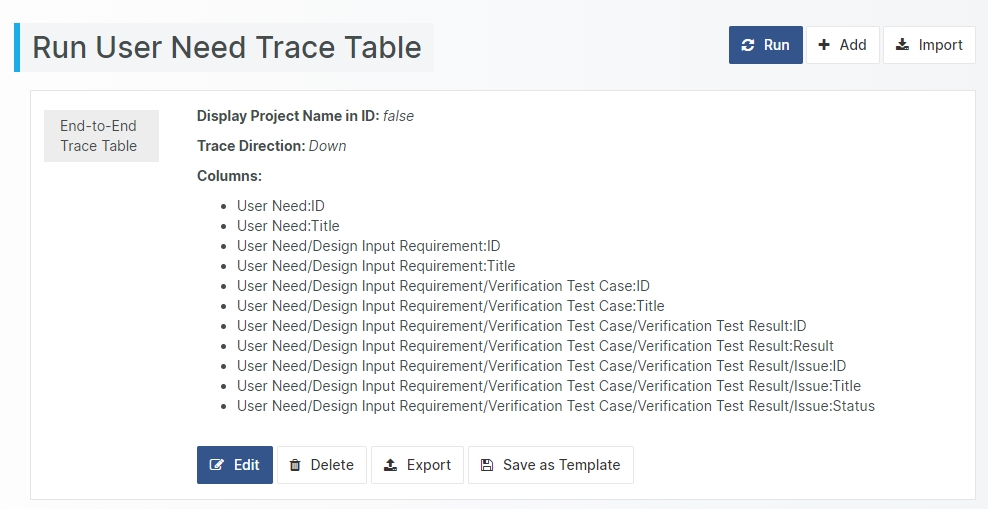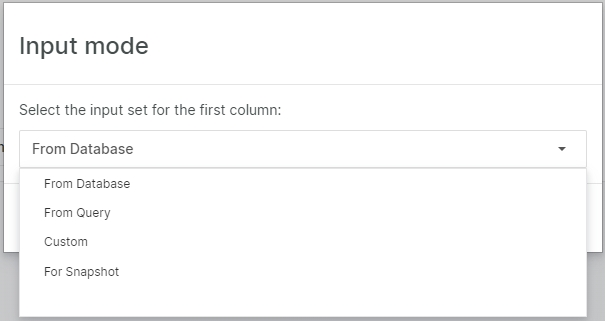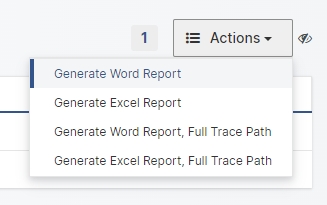Run a Trace Table
A Trace Table is a table where the traceability between Document Objects is depicted as table rows, showing the trace chain from left to right. In Aligned Element you can create, run, modify, export, import, delete and save Trace Tables as Word Templates.
The Trace table essentially consists of three parts:
an input set of document objects
a number of column definitions defining the trace chains
the output view, running the input set through the column trace chain definitions
Trace Tables can be performed on current Document Objects in the master project (when using the From Database, Query, or Custom input set) and the linked projects (when using the Query input set).
How to run a Trace Table
In the Navigation bar entry Trace Tables, select the type name that represents the first column of your Trace Table (the trace root type). In the next view, select any existing Trace Table of that type. This will display a summary of the table definition in the detail box to the right.

To run the selected trace table, click Run. You will be asked to choose the applicable input set:
From Database, all available document objects of the selected type
From Query, all document objects returned as a result when running an existing query
Custom, the user may select which individual document objects should be analysed
For Snapshot, the trace table is populated with items from the snapshot and items tracing to these items at the time of the snapshot.

After selecting the input set, the trace table will be loaded with trace information. You can navigate between all entries using the pagination on the top right of the table.

An empty cell to the right of a Document Object, indicates that no outgoing trace exists for that item, given the configuration of the Trace Table.
An empty cell to the left of a Document Object, indicates that the incoming trace is the same as the trace in the cell above.
The Document Object IDs are displayed as hyperlinks. Click on an ID to open the Document Object in the Document Object form or hover on the ID to see a preview of the Document Object.
To edit the currently selected trace table click on the Edit button.
To delete the currently selected trace table click on the Delete button.
Trace Table Reports
You can use the Action menu to print "one-off" reports of the populated trace table.

Generate Word / Excel Report - Creates a report in Word or Excel that is downloaded to your computer.
Generate Word / Excel Report (Full trace path) - These also create a report in Word or Excel but also populate all cells where there actually is a trace. Decrease probability but makes it possible to perform certain sorting operations in the target document.
Export a Trace Table Definition
Select a Trace Table and click Export to export the Trace Table definition to an xml file. The xml can be used to import the Trace Table in other Projects.
Import a Trace Table Definition
Click Import to select an exported Trace Table xml definition file and import it. If necessary, adapt the Trace Table input set after the import is completed.
Save a Trace Table Definition as Word Template
Click on the Save as Template button to save the currently selected Trace Table definition as a Word Trace Table Template to be used in the Word Add-in.
